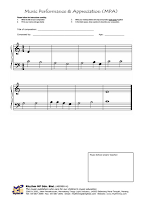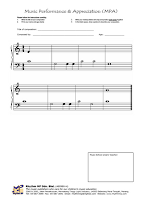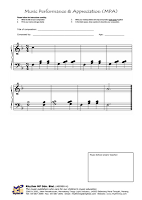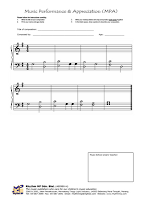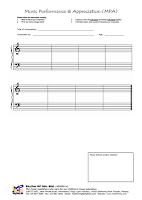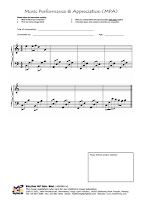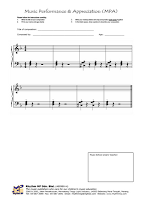
This card game is a great teaching and learning aid for music. Early music rudiments can be easily learned, remembered and applied instantly using these cards. Playable from 2 to 4 persons per group, it is a music game for the whole family and friends.
Follow these simple and effective steps to use the Card Games Made Easy Level 1A (or Card Game - A and Card Game - E):
The red colored cards represent note types and counts as shown below.

Separate the note types and counts into two separate sets of cards.

Place the cards face down separated from each other on the desk like shown below. Open a card from each set. If the note and counts match, keep the cards.

If the cards do not match, leave the opened cards on the table .
It is the turn of the next player and so on, until all the cards have been matched.
The person with the most cards shall be the winner.
The same rules apply to the blue set of cards. These cards matches the music notation with letter names as shown below.


========================================================
Developing Good Rhythmic Skills
This activity helps in reading music (sight-reading) and developing rhythmic feel.
Separate the cards with note types (crotchets, minims, etc) in set 1B-1 (or Card Game - C) from the rest. From these cards, simply form one bar of rhythm that equals four counts/beats. Next, clap the rhythm in a moderate tempo. Once you can clap the rhythm steadily well, continue creating more one bar rhythms to develop your rhythmic skills.

After a while with this exercise, you need to raise the level and challenge yourself even more to be better. Following the same procedure, create a two bar rhythm to clap.

You can create up to four bars of rhythm to clap and it can be quite challenging to know how well you can do it without stopping or slowing down to read the notes. You can also use a different time signature with three beats in a bar instead of four.

========================================================
Intervals & Solfège
Learning about intervals and developing good pitch with solfège singing is another feature of the Card Games. This activity covers a component in music theory (intervals) and a component in Aurals (pitch singing).
Using the card games from set 1B-2 (or Card Game - F), there are only five notes from Middle C to G to work on for the young beginner. Only the cards with the music notes will be used for this activity.
Pick any card to begin. Middle C was chosen for this example.

Next, chose any other of the remaining four notes and place it next to the Middle C note like shown below.

What is the interval between the two notes? Answer: Major 3rd.
Hit the Middle C note on your piano and try singing the pitch of the note that is a major 3rd away. Use the correct solfège syllable, which is DO for C note and MI for E note to sing the interval. Play the E note and check if your pitch is accurate. Carry on with this exercise and pair different notes with each other. The only interval to avoid is between E and F note, which creates a minor 2nd interval.

========================================================
A Simple Approach To Composing
Let’s learn to create music, which means to compose music using these cards.
Here are just a few simple steps to follow to compose an 8-bar melody:
1. Take four pieces of blank A4 paper and cut them vertically into two halves and you will have eight strips of paper. Each piece when placed horizontally will represent one bar. Group the cards accordingly as shown in the photo below. Let’s begin creating a two bar melody.

2. Select the note types and place them on the strip of paper to complete a total of four counts. Do the same for all the eight bars. Below are examples of the first and second bar. Include the beats/counts above every note as shown.


3. Once completed, put all the eight bars together to clap the rhythm of the entire eight bars that you have created.

4. So far, you have to create a rhythmic line. Next, turn every note into a musical note using C, D, E, F or G, as shown below.



5. The two bar melody when written on music manuscript looks like this.

6. It is always recommended to perform the melody of the song on a piano or any digital keyboard to know how it sounds. It excites us to hear what we have created and it will motivate us further.
========================================================
Having learned the steps to simple composition using the Card Games, the next step is to explore and create motifs that sound good. Every composition has to begin with a motif. A motif is a musical idea that can be two to four bars in length.
Following the procedures to begin composing using the card games, let’s begin creating a 2-bar motif in Common Time, which means there are four counts in a bar. So, two bars mean there are a total of eight counts/beats.
First, randomly create a rhythm to fit four counts in each of the two bars. Then, attach a note to the rhythm you have created, just like the example below.

You may not know how it sounds until you play it on the piano. Do that and decide if you like what you have just created. If not, the simplest way to create another motif would be just to move the notes around (like in the example below) and you can create many more motifs.

Play every motif you created on the piano and decide which ones are the best sounding.

========================================================
Printable page instructions:
For Mozilla Firefox Web browser
1. Click on the image
2. Select Print Preview from the File menu
3. Click Page Setup
4. In the Format Orientation: click Portrait
5. In the Format Scale: click Shrink To Fit Page Width
6. In the Margins: set Top, Bottom, Left and Right to zero (0)
7. Click OK
8. Click Print, click OK








- Card Games Made Easy Holiday Workshops
- Card Games as a learning aid
- Kid’s Percussion Band Workshop
- Music For Kids(音乐与绘画)
- Primary Chords
- Musical Form & Structure
- Click here for How to Schedule Musical Activities
========================================================













